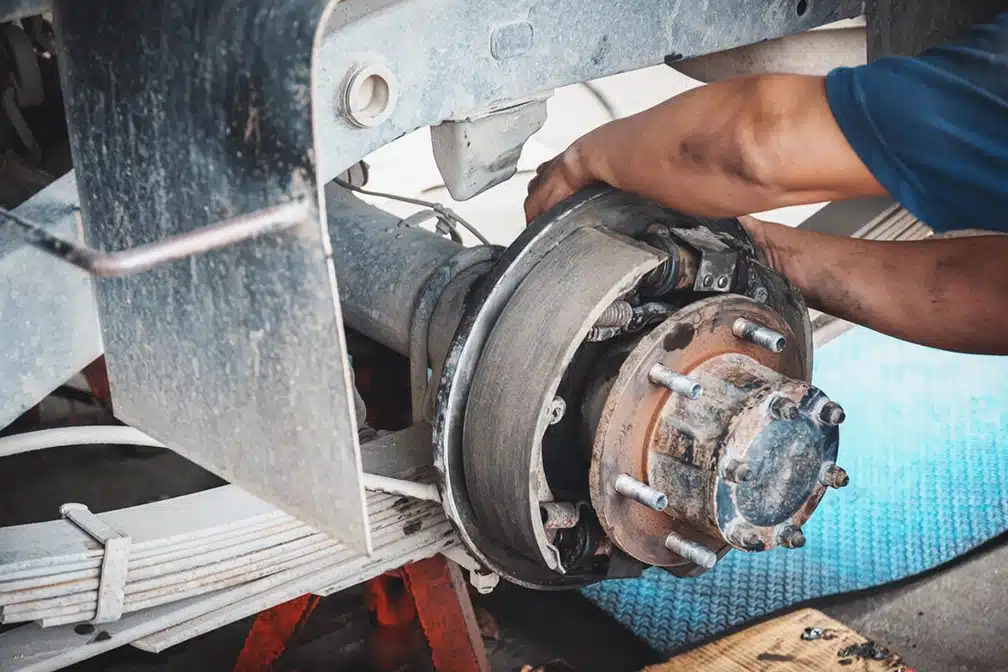Memphis, Tennessee, has found itself at the epicenter of a growing conflict involving A-1's Towing, a local towing company, and commercial truck drivers. The series of disputes,
Continue Reading
May 19, 2024 5:06 pm

Every year, the Commercial Vehicle Safety Alliance (CVSA) organizes Brake Safety Week, a week-long inspection and enforcement blitz to ensure commercial motor vehicle safety on North American roads. In August of this year, from the 20th to the 26th, inspectors across the United States, Canada, and Mexico conducted 18,875 commercial motor vehicle inspections as part of this event. The results have recently been released, and they shed light on brake safety in the commercial transportation industry.
The primary goal of Brake Safety Week, as CVSA emphasizes, is to reduce the number of crashes caused by faulty braking systems on commercial motor vehicles. This objective is achieved through roadside inspections and educational efforts targeting drivers, mechanics, owner-operators, and others involved in the industry. Brake safety is a crucial aspect of road safety, as malfunctioning brakes can lead to accidents with catastrophic consequences.
One of the standout statistics from this year’s Brake Safety Week is the high compliance rate among commercial motor vehicles. Of the total vehicles inspected, an impressive 87.4% did not have any brake-related out-of-service violations. This means that most commercial vehicles inspected during the event met the necessary brake safety standards.
While the compliance rate is commendable, it’s important to note that 12.6% of the vehicles inspected (2,375 in total) were placed out of service due to brake-related violations. These serious violations include broken brake drums, loose air tanks, corroded holes in spring brake housing, and inoperative tractor protection valves. These violations directly affect a vehicle’s braking system and, therefore, its roadworthiness.
Additionally, certain service brake violations can combine to put vehicles out of service under the 20% brake criterion. This criterion dictates that a vehicle will be placed out of service if the number of defective brakes equals or exceeds 20% of the service brakes on the vehicle or combination. Such violations include cracked linings, brake adjustment problems, and loose chambers.
The data also reveals that among the 2,375 commercial motor vehicles placed out of service, 295 (12.4%) had steering axle brake violations, 1,127 (47.5%) had stand-alone brake violations, and 1,394 (58.7%) failed the 20% defective brakes criterion. These figures underscore the diverse range of brake-related violations encountered during Brake Safety Week.
This year’s Brake Safety Week focused on lining/pad violations. While not necessarily out-of-service violations, CVSA chose this as the focal point because such violations still significantly impact a motor carrier’s safety rating. Left unaddressed, brake lining/pad violations can lead to more severe problems. They can become out-of-service violations if they occur on the steering axle or are combined with other brake violations to meet the 20% brake criterion.
CVSA’s commitment to enhancing road safety through initiatives like Brake Safety Week is commendable. CVSA plays a crucial role in preventing accidents caused by faulty braking systems on commercial motor vehicles by conducting inspections, identifying violations, and educating industry stakeholders.
As we reflect on the results of this year’s Brake Safety Week, it’s important to note that the work is far from over. Road safety remains a priority, and the commercial transportation industry must continue to prioritize proper brake inspection, maintenance, and operation. Next year’s Brake Safety Week is already scheduled for August 25-31, reminding us of the ongoing effort required to keep our roads safe for everyone. It is an opportunity for the industry to build on this year’s successes and further improve commercial motor vehicle safety.
Memphis, Tennessee, has found itself at the epicenter of a growing conflict involving A-1's Towing, a local towing company, and commercial truck drivers. The series of disputes,
Continue ReadingCDL Training Gets a $48M Grant to Supercharge the Road Ahead for Truckers and the Trucking Industry with New Opportunities, Efficiency, and Safety Improvements
Continue ReadingHeavy Duty Trucking News
Cummins' strong financial performance in the second quarter of 2023 was driven by increased sales, particularly in the heavy-duty truck engine market and the
The American Trucking Associations (ATA) has expressed strong opposition to the Department of Justice's proposed rule of marijuana reclassification.
Continue ReadingIn an effort to increase efficiency and sustainability in Trucking, Phillips Industries has launched their new, advanced, stick-on solar panels
Continue ReadingThe 2024 CVSA International Roadcheck is scheduled for May 14-16. Over 72 hours, inspectors across the US will conduct nearly
Continue ReadingAutomated License Plate Readers are a major advance in law enforcement technology but they raise significant privacy and oversight challenges.
Continue ReadingThe EPA's latest emission standards detailed in a final rule issued on March 29 are sparking vigorous debate within the
Continue Reading